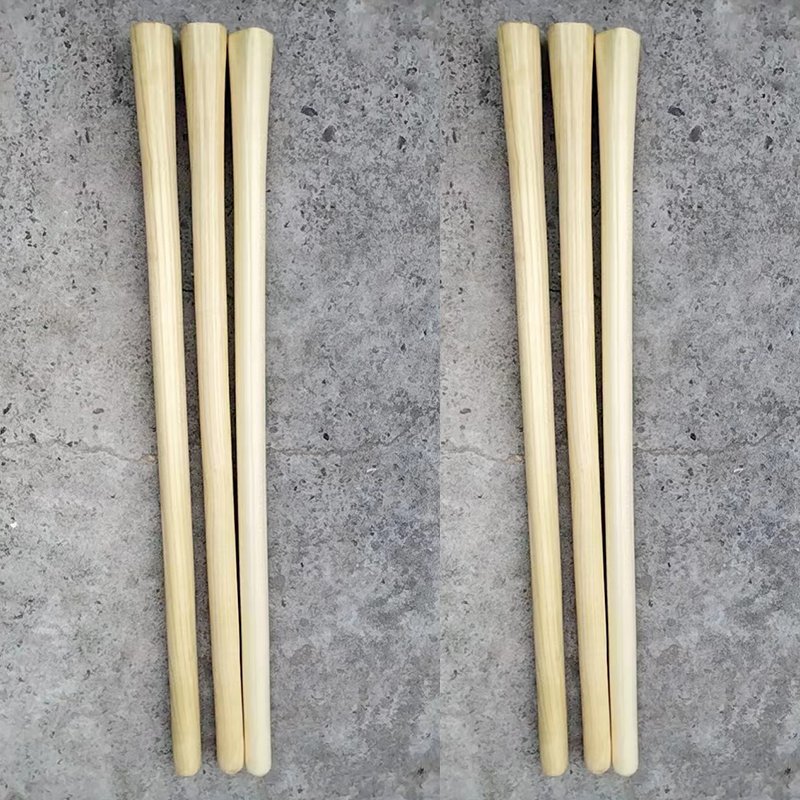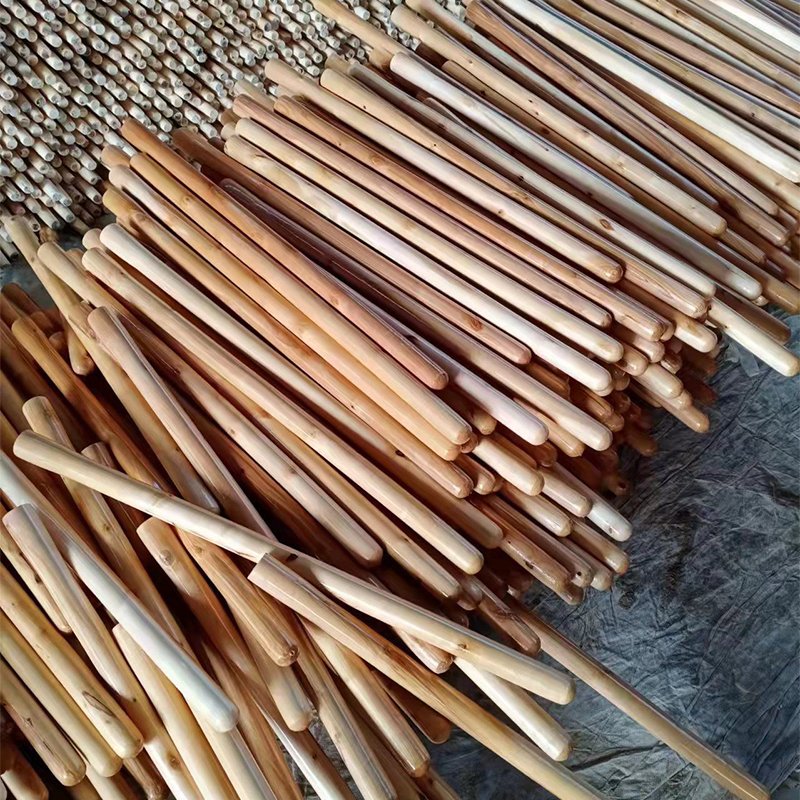Durable hoe wood handles – Factory Direct, High-Quality Wood

In agricultural production and daily life, shovel and hoe are common tools, and their wooden handles play a key role. Today, let’s take a closer look at the shovel handle and the solid wood hoe handle.
1、 Wood type
There are many choices of wood for making shovel handle and solid wood hoe handles. Common examples include white pine, which is made of light and soft material, rich in elasticity, with a fine and uniform structure. It dries well, is resistant to water and corrosion, and has good processing, coating, coloring, and bonding properties. Wooden handles made from it have a comfortable grip and a long service life. There is also birch wood, which is slightly heavy and hard in material, with a fine structure and high strength. It is well processed, painted, and glued, and can withstand large forces. It is suitable for use as a wooden handle for frequently used agricultural tools.
Material advantages
Compared to other materials, solid wood handles have natural and environmentally friendly properties and do not release harmful chemicals. And its texture is tough, which can effectively cushion the impact force generated when using tools and reduce the fatigue of the user’s hands. For example, when using a shovel to shovel earth, the solid wooden handle can make us operate more easily without fear of numbness of hands.
2、 Widely used
Use of shovel handle
The wooden hoe handles of the shovel is mainly installed on the shovel for digging, shoveling and other work. At the construction site, workers use a shovel with a wooden handle to shovel construction materials such as sand, soil, etc; In agricultural production, farmers use it to plow the land, dig trenches, clean up debris, and so on. For example, when reclaiming new land, the shovel handle can help farmers easily loosen the hardened soil to prepare for sowing.
Application of solid wood hoe and handle
Solid wood hoes with wooden handles and hoes are indispensable tools in agriculture. It is mainly used for agricultural operations such as weeding, loosening soil, and thinning seedlings. During the growth process of crops, it is necessary to frequently use hoes to remove weeds and avoid competition for nutrients between weeds and crops. Solid wood hoes with wooden handles allow farmers to operate hoes more flexibly and accurately remove weeds.
3、 Usage and maintenance
Correct usage method
When using the shovel and hoe with a wooden handle, you should master the correct posture and strength. For example, when using a shovel, stand firmly with both feet, hold the wooden handle with both hands, use the strength of your body to insert the shovel into the soil, and then carry out shoveling. When using a hoe, adjust the position and strength of the wooden handle according to different operational needs to achieve the best working effect.
Maintenance points
Wooden handles require regular maintenance to extend their service life. After use, the wooden handle should be wiped clean to prevent moisture and soil residue from causing the handle to rot. If not used for a long time, apply a layer of protective oil on the wooden handle to prevent it from drying out and cracking. In addition, when storing, the tools should be placed in a dry and ventilated place to avoid deformation of the wooden handle due to moisture.
Although the wooden hoe handles of shovel and the wooden handle of solid wood hoe seem ordinary, they play an important role in our life and production. Understanding their materials, uses, and maintenance methods can help us better use these tools and improve work efficiency. Whether they are hardworking farmers in the fields or busy workers on construction sites, a good tool with a wooden handle is their right-hand man.

The simple and labor-saving method of weeding with a hoe is as follows:
choose the appropriate hoe: ensure that the hoe is sharp and suitable for your height and strength, so as to better control and use it.
The correct grip method: Hold the handle of the hoe with both hands, one in front and one behind.
The distance between the front hand and the head of the hoe accounts for two-thirds of the entire handle, and the distance between the back hand and the tail of the handle is 20 centimeters.
A distance of 40 to 50 centimeters between the hands is more appropriate, which allows for more flexible force application and reduces fatigue.
Mastering the correct weeding technique: When weeding, the hoe should be swung towards the roots of the weed, and it should break cleanly with just one swing.
Avoid applying too much force to prevent the soil in the vegetable field from being turned over. For stubborn weeds, you can apply a little pressure and use a hoe to dig deep into the soil to uproot the weeds.
Reasonably arrange weeding time: Remove weeds in the early stages of their growth, when their root systems are not well-developed and easier to remove.
Dealing with removed weeds: Place the removed grass pile in one place and remember to clean up the soil on the grass roots. After the grass dries, it can be burned and fertilized with plant ash. By following the above steps and techniques, you can use a hoe to weed more easily and effortlessly.
